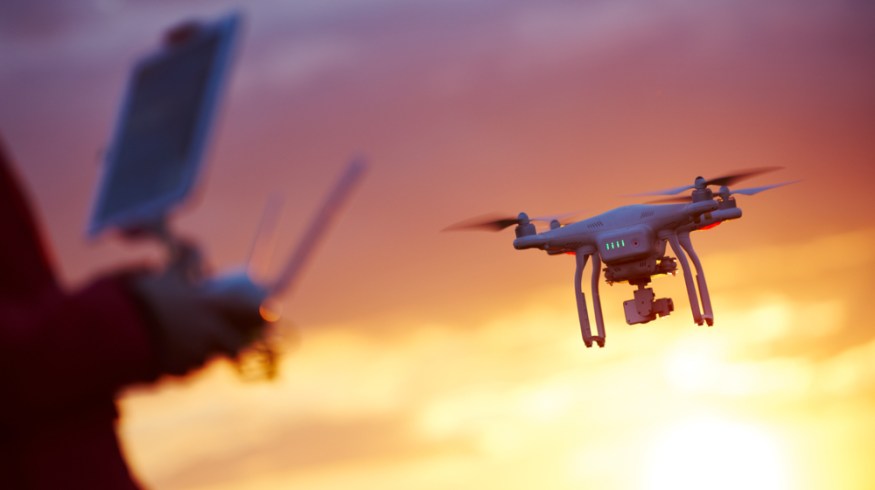
Pros and Cons: Is Drone Videography Still Viable?
A look into the state of drone videography to see if it’s still a viable form of production, or a passing trend.
It feels like ages ago but, in reality, the first time I saw a drone camera flying through the sky was probably less than ten years ago. A friend had picked one up and was flying it around a park near our production studio. We were excited to see how easy it was to control and maneuver around in the air.
We were even more excited to take the drone back into the offices and check out the footage. Simply put, as many who have dabbled in drone videography themselves over the years can attest, it looked amazing.
This was truly game-changing technology, unlocking aerial videography that previously could’ve only be shot from highly expensive helicopter rentals or the like.
Flash forward to several years later—everyone and their twelve-year-old cousin has a drone camera buzzing around in the sky. The cameras and drones themselves are both more affordable and much more sophisticated.
But, has the market for drones ever really developed—or is it a passing fad?
The State of Drone Videography
When first introduced, I was working in a small video production agency. Drone videography was indeed a hot selling point. We added an “aerial videography” section to our website and were sure to tell any client that would listen about our new “drone video” package, which we offered as an upgrade for any other type of project.
It took a little while to get going, but once current clients (and potential clients) saw the aerial footage soaring above their office building, or their corporate event, or even just BTS footage of their commercial shoots, they were indeed quite impressed.
I also saw freelance friends who were excited about drone videography go out and buy drone camera rigs of their own. They went out for certifications and honed their skills hoping to get hired on for different production shoots and projects.
It was an exciting time.
But, eventually, we saw the numbers for drone videography begin to fall off. Clients were always impressed with it but chose to upgrade less and less, unless the project specifically needed aerial footage.
This is where I think the drone videography industry is currently at—it’s fantastic technology, but when do you actually need aerial footage?
Uses for Drone Videography
I believe the biggest issue with drone videography doesn’t have anything to do with the technology or the operators themselves, but rather clients and expectations.
We’ll get a bit more into how to market and sell drone videography below, but here are some of the basic functions of drone videography as dictated by the market, in general.
- Provide setting and context
- Survey land or facilities
- “Eye-in-the-sky” POVs
- Track high-speed motion or movement
- Capture picturesque landscapes
From a client perspective, drone video is often thought of in terms of function. How or what can a drone capture with a camera that you can’t from standing on the ground?
The crux of the majority of these functions has to do with perspective, a clear benefit from recording footage from such a high angle and with so much movement.
The other types of drone videography can be much more creative and fun, but are often more rare in terms of clients needing tracking (a car chase scene, perhaps) or picturesque landscapes (real estate videos, for example).
How to Market Drone Videography
So, the real question today actually comes down to marketing. How do you market drone videography in a world where this technology is no longer considered new? Again, the answer comes down to function—as well as education.
Clients need to see a value proposition. Not only for drone videography, but for video production, in general. Here’s the formula: “This video project will help your company make money by (blank).”
Furthermore: “This aerial drone videography will help your video be more successful, and make your company more money by . . . ” Adding perspective and production value that cameras on the ground simply can’t offer.
For all of the uses above, drone videography is a slam dunk. However, the trick is to educate clients into just how much these different perspectives are needed to help videos really shine with creativity and professionalism.
So, whether you’re looking to just add a few aerial shots into any run-of-the-mill video project—from television spots to wedding videos—it’s up to you to find the best way to show your clients that these aerials will take your video to the next level.
Need a few more filmmaking tips, tricks, and advice? We’ve got you covered:
- Revise, Revise, Revise — A Writer’s Guide to Practical Editing
- How COVID Has Changed the Filmmaking Industry
- The “Last of Us” Fan Film Shot with the BMPCC 6K
- The Flashback Sequence Effects Tool Kit
- LUMIX BS1H/Sony FX6: Pros and Cons of a Camera in a Box
Cover image via Dmitry Kalinovsky.





